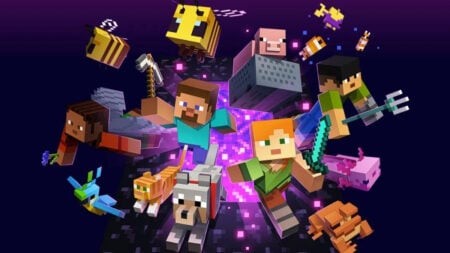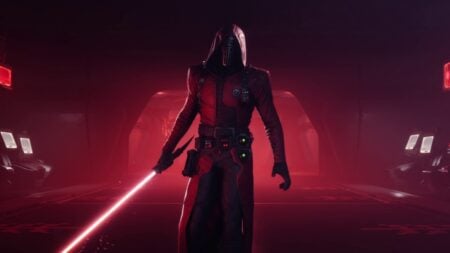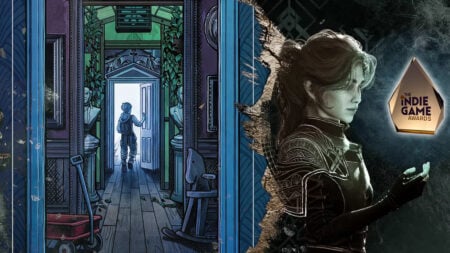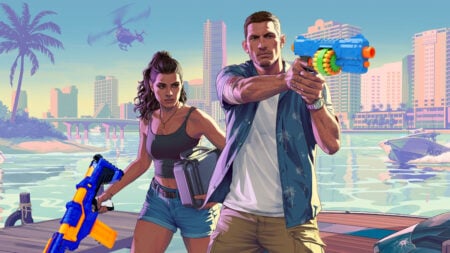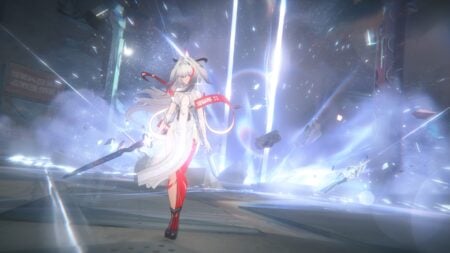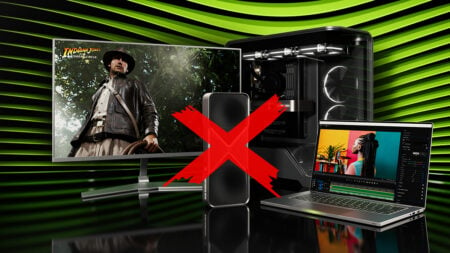Once every few years, we get a new game that breaks the boundaries of everything that’s in the market. Some bring groundbreaking gameplay mechanics. Others provide a new traversal feature that everyone and their grandmother use now. This time, Senua’s Saga: Hellblade 2 is the one making splashes in the world of graphics by pushing its looks to a photorealistic level. The great thing about it is that, for an action-adventure game, it never compromises performance to deliver top-notch visuals.
Hellblade 2’s Graphics Are Things of Dreams

When Senua’s Saga: Hellblade 2 begins, it doesn’t smack you in the face with its graphics. Instead, it gives you an establishing shot of Senua in a boat fighting against a storm. Our warrior is then thrust into the ocean with waves crashing left and right. You feel her gasp for air; you see the lightning through the water, the debris falling into the abyss. And then, as soon as you reach the shore, that’s when the visuals hit you. The rain falling on your skin, the shine of the water as it falls down through the rocks, the particles carried by the wind as they hit Senua’s face. If your jaw doesn’t drop on the floor at this precise moment, you need a better screen.
See, Senua’s Saga: Hellblade 2 doesn’t just bring high-definition graphics and calls it a day. It isn’t an upscaling in textures or any other visual voodoo we’ve seen in games. No. It is something else. It is a plethora of elements working in tandem. Watching every element come together to create a set piece that is so atmospheric that it evokes claustrophobia, fear, and desperation. If that isn’t visual immersion, I don’t know what is.

When I think about why the graphics of Senua’s Saga: Hellblade 2 surprised me so much, it is because of how well they work together. For example, certain games put a lot of time into making character models as realistic as possible. You see the faces with peach fuzz, the hair physics when the wind blows, etc. But then, you see some low-poly grass in the distance, and you know you’re in a video game, and that’s fine. On the other hand, Ninja Theory took its time to grab its best visual instruments and make an orchestra out of them.
The visual symphony that never lets up in Hellblade 2 is achieved only because the developers knew how to mix certain elements to bring each scene to life. For example, one of my favorite sequences features Senua in a body of water. The background is pitch-black, and you see her slowly coming out of the water, only half of her face showing. We see a close-up; see her eyes, the objects that reflect in them, and the drops of water running down her forehead. Little by little, the scene shifts to a bright landscape overlooking a dilapidated village, and it never breaks immersion. It never made me feel “Oh, I’m back in a video game.” No. I kept thinking, “This should be real.”

The biggest contribution of Hellblade 2 regarding graphics is how it blurs the line between reality and computer images. Anywhere you look, you’ll notice that even the tiniest rock looks exactly like any you might find in your backyard, and that’s something few games can replicate. But what makes me feel the developers set a new standard beyond photorealism is optimization, which nowadays is an important topic.
Games that aren’t as beautiful as Senua’s Saga: Hellblade 2 tend to drop the ball due to the lack of graphical optimization, but this sequel doesn’t. Yes, one could argue this is only an action-adventure game with heavy narrative elements and little action. But still, what Ninja Theory has accomplished here is something we should expect in other products, at least with this style.
Ultimately, I feel everyone might have different opinions on Senua’s Saga: Hellblade 2 regarding its length and gameplay, but in terms of graphics, we can all agree they are second to none. This only makes me think that this generation hasn’t pushed the limit yet, and only Ninja Theory was brave enough to break that ceiling and show us what a game can achieve visually. Hopefully, this isn’t the last photorealistic game we’ll see because after finishing Hellblade 2, it is hard to return to the visuals we’re used to.


